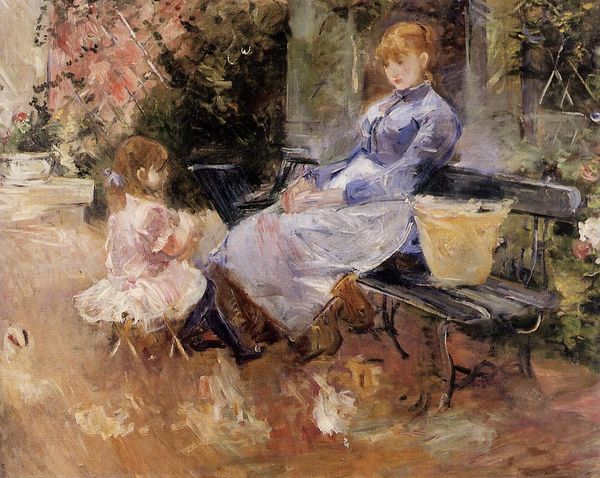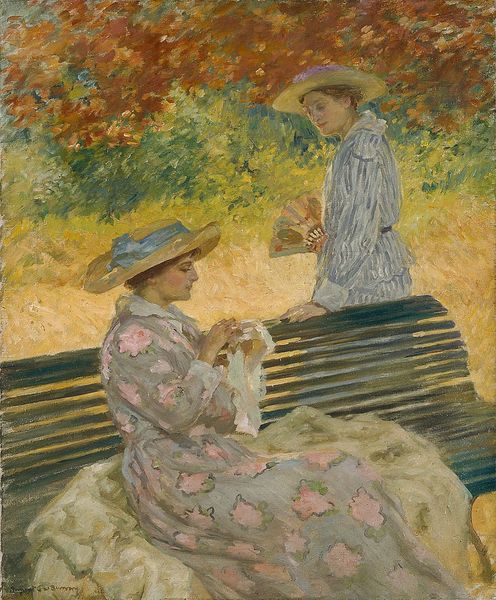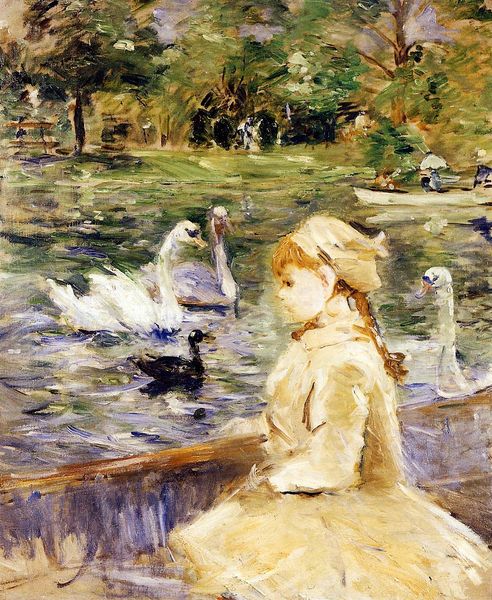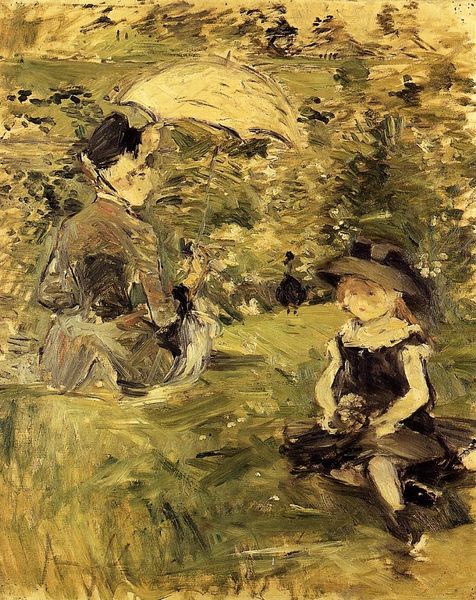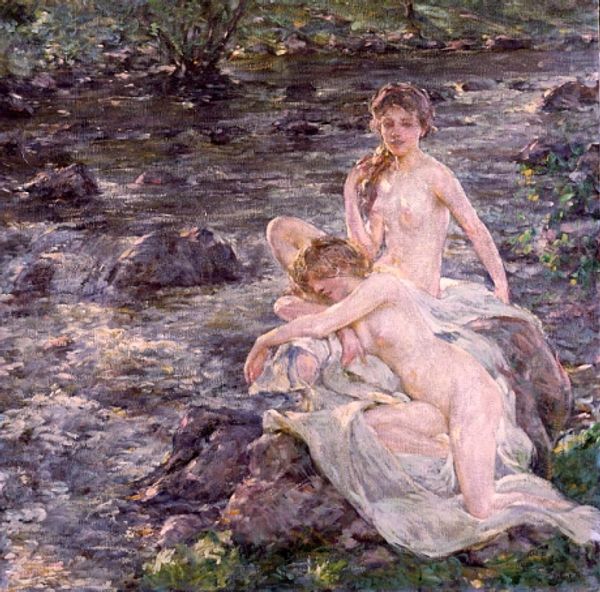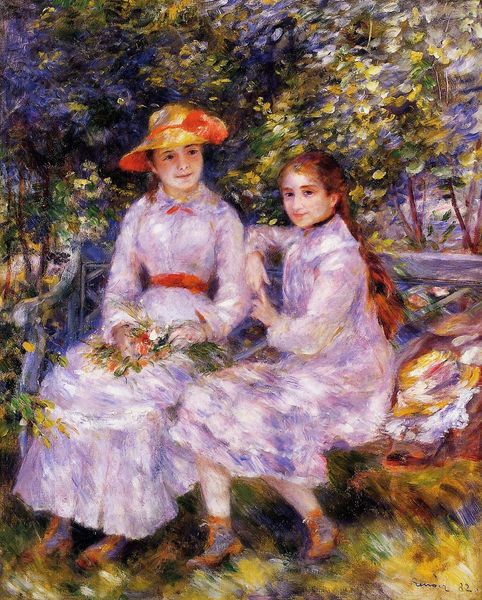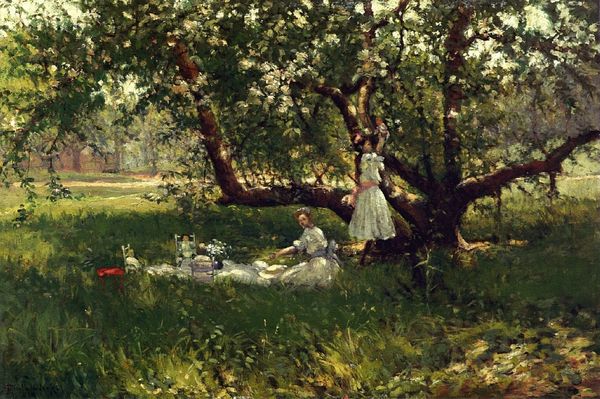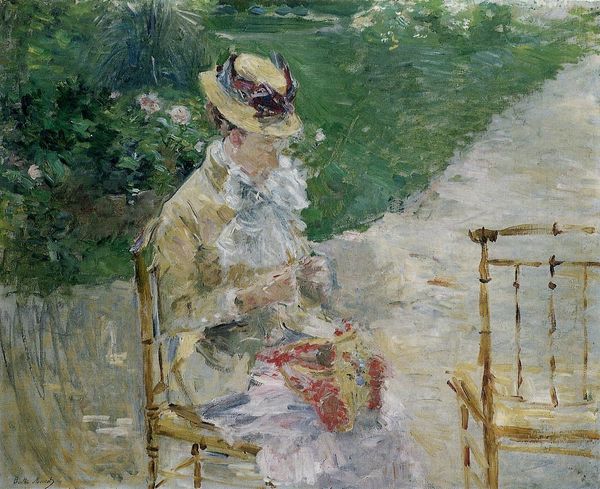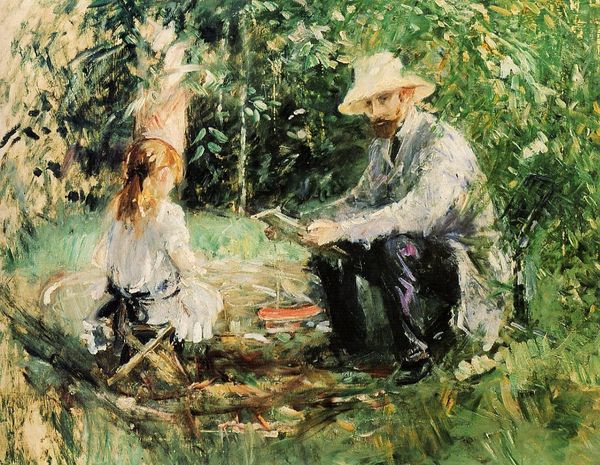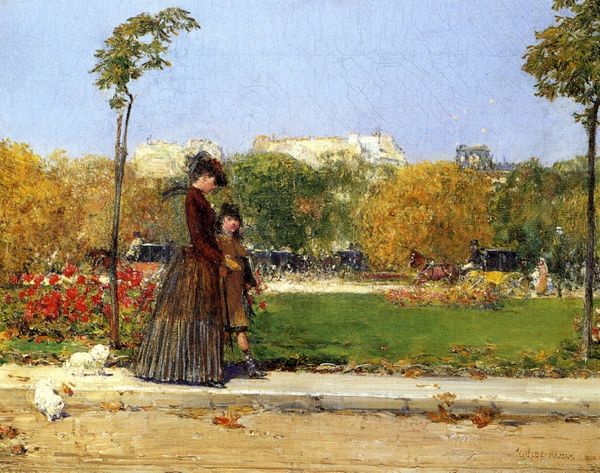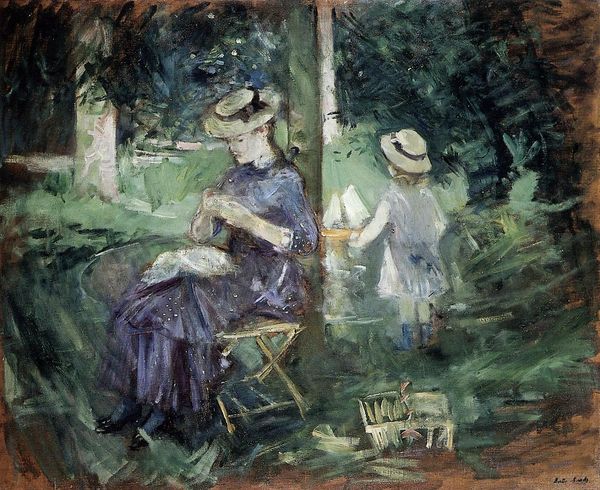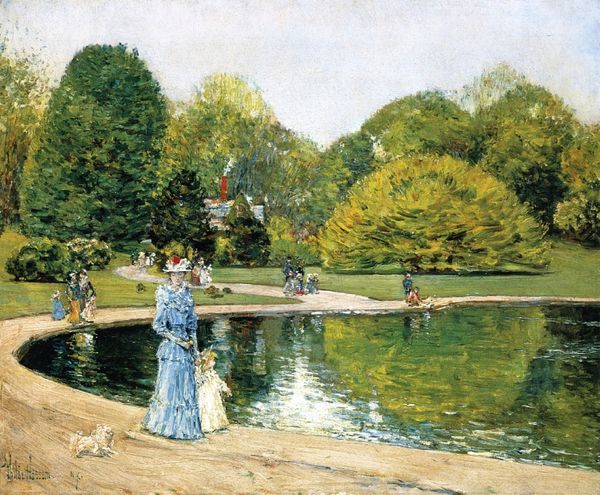
painting, plein-air, oil-paint, impasto
#
portrait
#
tree
#
garden
#
painting
#
impressionism
#
impressionist painting style
#
plein-air
#
oil-paint
#
landscape
#
impressionist landscape
#
figuration
#
oil painting
#
impasto
#
forest
#
park
Dimensions: 54 x 65 cm
Copyright: Public domain
Editor: Berthe Morisot’s "In the Garden at Maurecourt," painted in 1884 with oil on canvas. The scene presents two figures in a garden, seemingly captured in a fleeting moment of tranquility. I’m immediately drawn to the contrast between the defined figures and the looser background. What do you observe? Curator: The piece is a testament to the power of suggestion within a formal structure. Notice how Morisot employs short, broken brushstrokes? These not only create the impression of light flickering across the scene but also serve to unify the foreground and background, even as they differ in textural density. Editor: Yes, the foreground is quite detailed. And the interplay of light and color is so delicate. But tell me, where does the eye gravitate within this field of visual stimuli? Curator: Consider the composition's balance. The figures are placed asymmetrically, pulling the viewer’s focus, a strategy also evident in their differentiation by colour – one in umber, one in ochre. However, Morisot offsets this by grounding them in a sea of verdant hues, thereby creating visual harmony and disrupting conventional expectations. The eye dances rather than settling. Editor: Do you think that was a conscious decision on Morisot’s part, to avoid the traditional focal points? Curator: Undoubtedly. By deliberately subverting traditional methods, Morisot invites us to look more closely, to actively participate in the construction of meaning. Notice, for instance, the calculated lack of definition in the background elements. What significance can we draw from this, if not the prioritisation of visual experience? Editor: It really encourages a different kind of viewing. I had never considered how much the artist's deliberate "blurring" challenges our gaze! Curator: Indeed. The painting prompts us to reflect on the act of perception itself, as opposed to seeking any representational certainty. And it provides the means for that inquiry directly in the painted forms. Editor: I see it now; it's not just a garden scene, but an investigation of form and light! Curator: Precisely! A very productive visit, wouldn't you say?
Comments
No comments
Be the first to comment and join the conversation on the ultimate creative platform.
